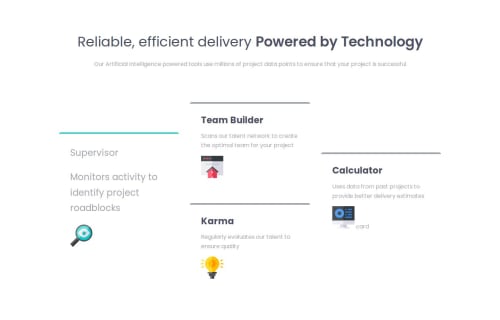https://github.com/Papi84/four-card-feature-section-Master/blob/main/s

Solution retrospective
I’m most proud of the responsive design I implemented, ensuring the project looks great on both mobile and desktop screens. It was my exciting using CSS Grid, and I’m thrilled with how it turned out.
Next time, I would spend more time on the planning phase to avoid last-minute changes. I also realized the importance of testing more thoroughly on different browsers, as I encountered some compatibility issues late in the project.
What challenges did you encounter, and how did you overcome them?One of the main challenges I faced was ensuring the design was fully responsive across different devices. It was difficult to balance the layout so that it looked good on both mobile and desktop screens. This challenge helped me better understand responsive design principles and improved my skills in creating layouts that work well on different devices.
What specific areas of your project would you like help with?I would like help with improving the accessibility of my design. Ensuring that the project is user-friendly for people with disabilities is important to me, but I'm not sure if I’ve implemented the best practices effectively. While I’ve included some basic accessibility features, I’m unsure if I’ve covered all the necessary aspects, such as color contrast and keyboard navigation. I would appreciate any feedback or resources on improving accessibility, particularly in ensuring that the design is fully navigable using only a keyboard and that all visual elements meet contrast standards.
Please log in to post a comment
Log in with GitHubCommunity feedback
No feedback yet. Be the first to give feedback on Papi's solution.
Join our Discord community
Join thousands of Frontend Mentor community members taking the challenges, sharing resources, helping each other, and chatting about all things front-end!
Join our Discord